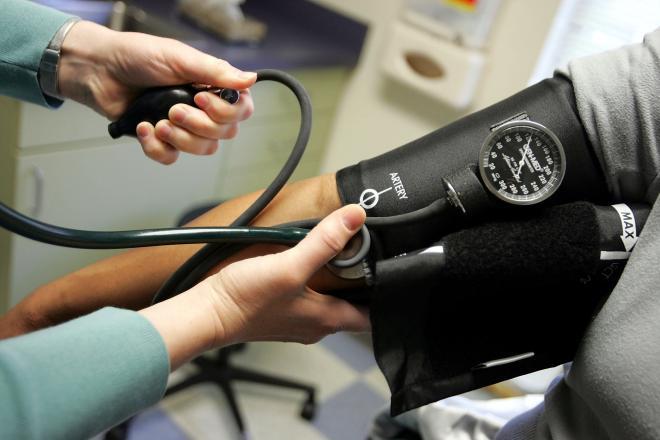Many people in the United States, especially those past the age of 45, suffer from high blood pressure — one in three American adults, to be exact. If the condition goes untreated, it can lead to heart attack, heart failure, bleeding in the brain, and even death. But according to a new study published in JAMA, an intensive treatment can prevent all that from happening.
“These findings have substantial implications for the future of high blood pressure therapy in older adults because of its high prevalence in this age group, and because of the devastating consequences high blood pressure complications can have on the independent function of older people,” study author Dr. Jeff Williamson told Health Day. Williamson is a professor of geriatric medicine and gerontology at the Wake Forest Baptist Medical Center in Winston-Salem, N.C.
Williamson and his team studied more than 2,600 elderly patients, all over the age of 75, using data from the U.S. National Institutes of Health’s Systolic Blood Pressure Intervention Trial. They divided patients by their target for systolic blood pressure, the top number of a blood pressure reading: a standard 140 mm Hg or a more intensive target of 120 mm Hg. This number reveals the pressure in one’s blood vessels when the heart is contracting.
While patients in the intensive group required extra medication to reach their target, they were almost one-third less likely to suffer a heart attack, stroke, or heart failure compared to the standard group; they were also one-quarter less likely to die. What’s more, the intensive group didn’t experience any additional side effects, such as falls, fainting, kidney injury, and hospitalization.
Since the current guidelines on high blood pressure management for the elderly are inconsistent, researchers said, their study presents a unique opportunity for future treatment.
“Some of the most vulnerable ambulatory people in the community who may suffer complications of high blood pressure can benefit from intensive blood pressure lowering and it is safe to do so,” Williamson said in a press release. “If you look at elderly people who are hospitalized in the year that they become disabled and have to leave their home, about half of the time those diagnoses or hospitalizations result from complications of [high blood pressure].”
In addition to the number of Americans affected by high blood pressure, there’s also a concern with money: In the U.S., about 46 billion dollars goes into the condition each year, including the costs of health care services, medication, and missed workdays. Williamson said most of the medications used in the study were generic, so intensive treatment may not only be effective, but cheaper than other options, too.
“This is a fairly inexpensive way to help prolong the time that people can live independently in their homes and avoid those common conditions that often cause a person to have to move to higher level of care or an institution,” he explained.
Source: Williamson J, Supiano M, Applegate W, Berlowitz D, Campbell R, Chertow G, et al. Intensive Vs Standard Blood Pressure Control and Cardiovascular Disease Outcomes in Adults Aged > 75 Years.
Source: Medical Daily, JAMA. 2016.











